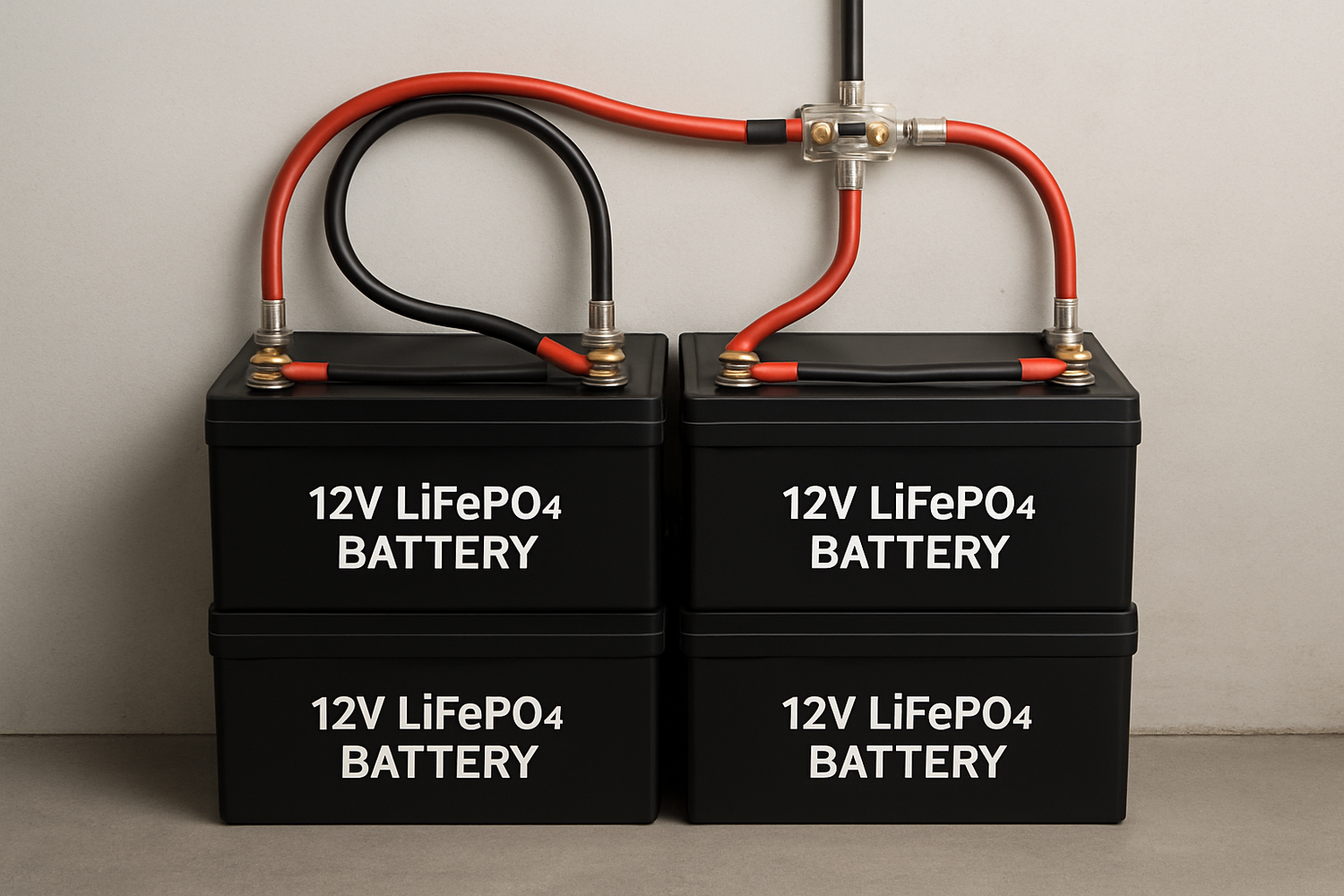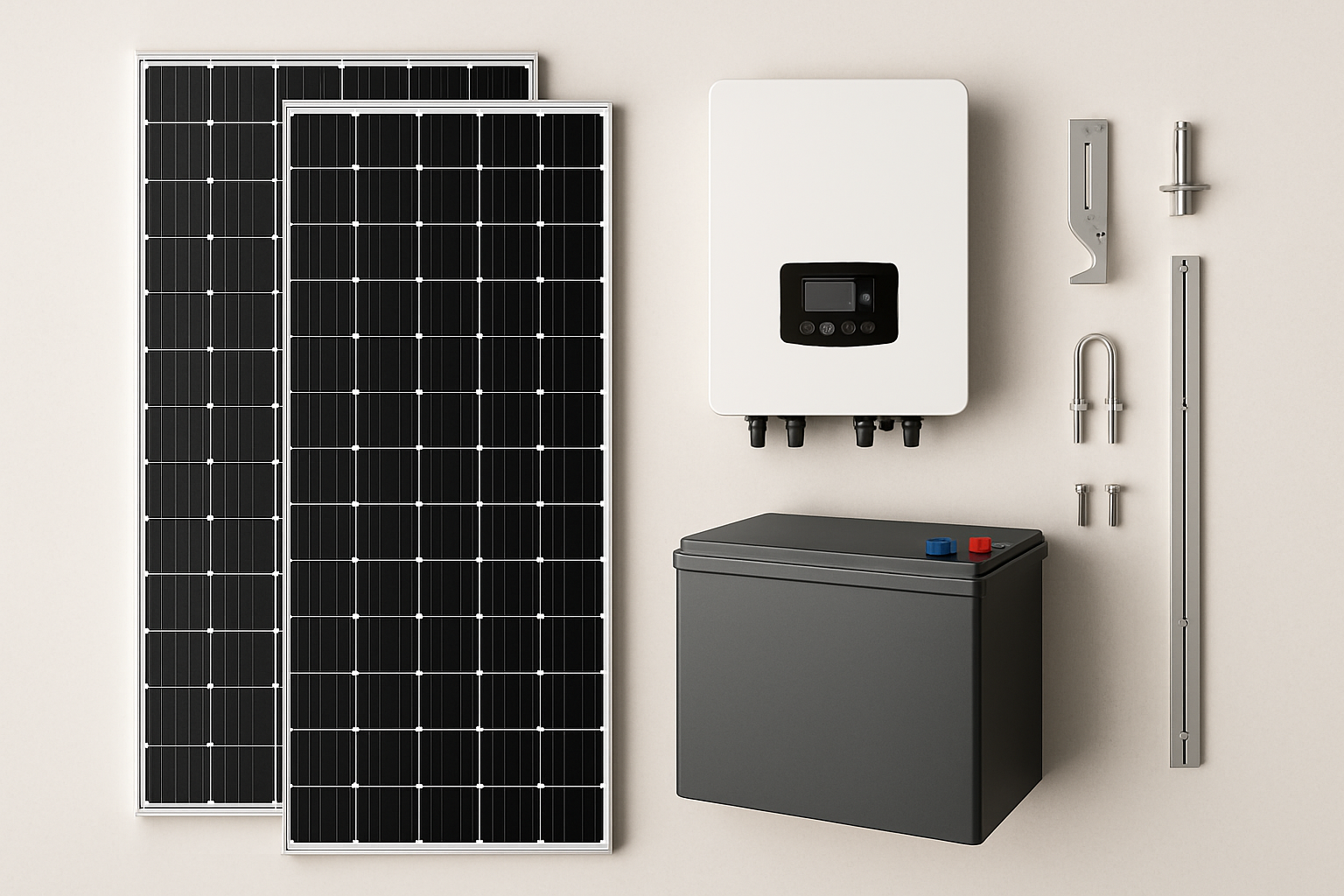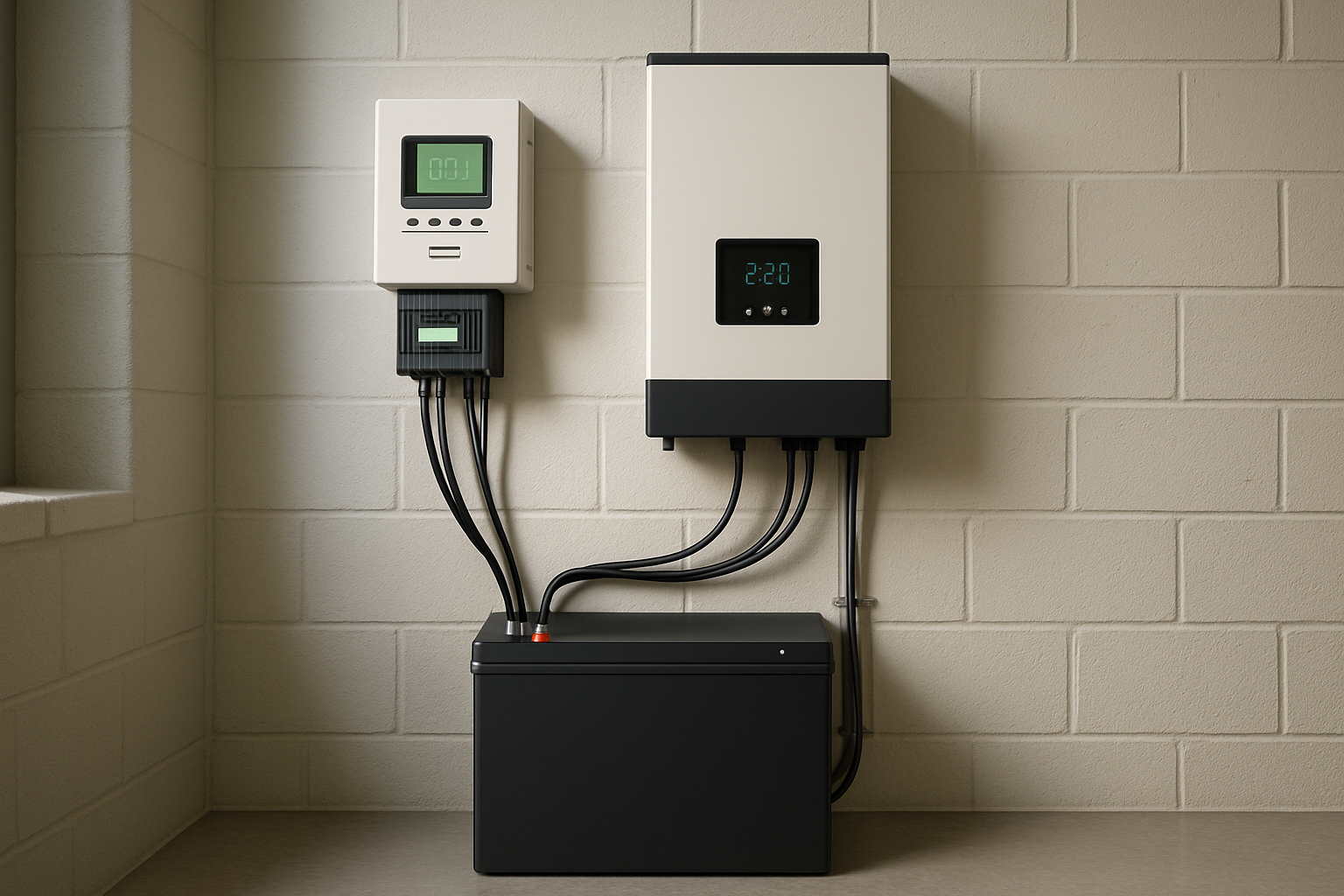Properly wiring your 12V LiFePO4 batteries is a critical step in building a dependable off-grid solar system. The connections within your battery bank directly influence the system's voltage, capacity, and overall safety. As residential battery storage becomes more common, understanding these principles is fundamental for anyone seeking energy independence. According to the U.S. Energy Information Administration, the coupling of small-scale solar with battery storage is a growing trend, making these skills increasingly valuable. This guide provides clear instructions on configuring your batteries, selecting the right components, and implementing essential safety measures for a robust solar power setup.
Understanding the Fundamentals of Battery Connections
The way you connect your 12V LiFePO4 batteries determines the electrical characteristics of your energy storage. The two primary methods are series and parallel connections, which can be combined for more complex systems.
Series Connections for Increased Voltage
A series connection increases the total voltage of the battery bank while the capacity (Amp-hours) remains the same. To create a series connection, you link the positive terminal of one battery to the negative terminal of the next. For instance, connecting two 12V 100Ah batteries in series results in a 24V 100Ah battery bank. This configuration is often used in larger systems to power 24V or 48V inverters more efficiently.
Parallel Connections for Increased Capacity
A parallel connection increases the total capacity of the battery bank while the voltage stays the same. This is achieved by connecting the positive terminals of the batteries together and all the negative terminals together. Using the same example, connecting two 12V 100Ah batteries in parallel creates a 12V 200Ah battery bank. This setup is ideal when you need longer runtime from your appliances without changing the system's voltage.
Series-Parallel Connections for Voltage and Capacity
For large off-grid applications, you might need to increase both voltage and capacity. A series-parallel connection accomplishes this. For example, you could create two pairs of 12V 100Ah batteries connected in series to make two 24V 100Ah banks. Then, connecting these two banks in parallel would result in a final configuration of 24V 200Ah. This scalable approach allows for highly customized power systems.
Selecting the Right Components for Safe Wiring
The safety and efficiency of your battery bank depend on more than just the batteries themselves. The cables, fuses, and connectors you use are just as important. Using undersized components can lead to significant energy loss, overheating, and potential fire hazards.
Sizing Your Battery Cables
Battery cables must be thick enough to handle the maximum current of your system safely. Cable thickness is measured by the American Wire Gauge (AWG) standard—a lower AWG number means a thicker cable. The correct gauge depends on the current (amps) and the length of the cable. A longer or higher-current cable run requires a thicker wire to minimize voltage drop. Always use high-quality, pure copper wiring for the best conductivity.
| Max Amperage (A) | Recommended AWG Cable Size (up to 10 ft) |
|---|---|
| 50A | 6 AWG |
| 100A | 2 AWG |
| 150A | 1/0 AWG |
| 200A | 2/0 AWG |
Disclaimer: This table is a general guide. Always consult the product specifications for your inverter and a certified electrician to ensure compliance with local electrical codes.
Fuses and Circuit Breakers: Your System's Protection
Overcurrent protection is non-negotiable in any battery system. A correctly sized fuse or circuit breaker, installed on the main positive cable from the battery bank, will protect your equipment and wiring from damage during a short circuit or overload. The fuse should be rated to handle the maximum continuous draw of your inverter while being below the maximum ampacity of your cables. This single component is a critical safety device that prevents catastrophic failure.
Step-by-Step Wiring Instructions
Connecting your batteries requires a methodical approach. Rushing this stage can lead to dangerous mistakes. Always prioritize safety and double-check your work.
Preparing for Installation
Before you begin, gather all necessary tools, including wrenches, wire cutters, cable crimpers, and a multimeter. Wear safety glasses and insulated gloves. Confirm that all batteries are of the same model, capacity, and age, and ensure they are fully charged to a similar voltage level. This helps prevent imbalances once they are connected.
Executing the Connections
First, plan your battery layout to keep cable runs short and neat. Connect the series or parallel jumper cables between the batteries as planned. Once the bank is configured, check the total voltage with a multimeter to confirm it is correct (e.g., ~25.6V for a 24V series bank). Finally, connect the main positive and negative cables that lead to your system's main shut-off switch and inverter. Always connect the main load last.
Advanced Considerations for Optimal Performance
A well-wired system goes beyond basic connections. To maximize the life and performance of your LiFePO4 batteries, consider the following factors.
The Importance of Battery Balancing
In a series-connected string, it is vital that all cells maintain an equal state of charge. Modern LiFePO4 batteries include an internal Battery Management System (BMS) that actively monitors and balances the cells. The BMS protects against overcharging, over-discharging, and extreme temperatures, which is a key reason for their long cycle life. Always use identical batteries in a series string to allow the BMS to function effectively.
System Voltage and Efficiency
While 12V systems are common, higher voltage configurations (24V or 48V) offer distinct advantages. A higher voltage system carries less current for the same amount of power, which reduces resistive losses in the wiring and allows for the use of thinner, less expensive cables. The U.S. Department of Energy highlights that proper system design, including voltage selection, is key to minimizing energy losses. For a detailed analysis of how different components and configurations impact output, the ultimate reference on solar storage performance offers valuable data on optimizing your setup for maximum efficiency.
A Foundation for Energy Independence
Correctly wiring your 12V LiFePO4 batteries is a foundational skill for building a resilient off-grid solar system. By understanding how to create series and parallel connections, select appropriate cables and fuses, and follow safe installation practices, you build a power system that is not only effective but also safe and durable. This attention to detail ensures your investment in solar energy provides reliable power for years to come, moving you closer to true energy independence.
Frequently Asked Questions
Can I mix old and new LiFePO4 batteries?
It is strongly advised not to mix batteries of different ages, capacities, or manufacturers. Mismatched cells can lead to imbalances, reducing the overall performance and lifespan of your battery bank. This can overwork newer batteries and prevent the bank from reaching its full potential.
What size fuse should I use for a 12V 100Ah LiFePO4 battery?
The fuse size depends on your system's load and wire gauge, not just the battery. It should be sized to protect the wire and handle the maximum continuous current of your inverter or other loads. A common setup might use a 100A or 150A fuse for a 2 AWG cable, but you must consult your component specifications to determine the correct rating.
How tight should the battery terminals be?
Terminal connections should be snug but not over-tightened. It is best to use a torque wrench and follow the manufacturer's specifications, often measured in Newton-meters (Nm) or foot-pounds (ft-lbs). A loose connection can cause high resistance, heat, and a potential fire hazard, while over-tightening can damage the terminal and the battery case.





Leave a comment
All comments are moderated before being published.
This site is protected by hCaptcha and the hCaptcha Privacy Policy and Terms of Service apply.